Thank you very much for accepting this interview for PORTUS Portrait, focused on Rotterdam.
We would like to talk with you about the role of Rotterdam as a port city territory, hosting Europe’s biggest port, focusing on its future development, its global leadership role and the importance of value-based planning. In particular, we would like to hear from you about the impact that port development will have on the city and on the territory in terms of efficiency, competitiveness and business, and in light of the challenges of digitisation, climate mitigation and adaptation, sustainable development and increasingly widespread practices related to the circular economy.
INTERVIEWER | Carola HEIN
Could you tell us more about how you see the future development of the Rotterdam port (and European ports more generally)? What kind of different scenarios do you imagine for the extended Rotterdam port city territory? For example, what do you think the impact of port development will be on the cities and territories nearby? How does/should the Port of Rotterdam Authority engage with other local/municipal/provincial/territorial players, and how far into the hinterland (e.g. Duisburg)?
INTERVIEWEE | Allard CASTELEIN, President and Chief Executive Officer, Port of Rotterdam
The two most important developments that have an impact on the development of ports in the next decades are the digitisation and the energy transition. Like in other parts of society, digitisation increases the efficiency of all kinds of processes. Making intelligent use of data leads to all kinds of optimisations, from just-in-time deliveries to optimising the use of the electricity grid. But digitisation also changes the way we work. Other skills are needed than those in the past. The focus shifts even more from blue overall to white collar, from physical labour to office work, especially in IT.
The energy transition also has a huge impact on Rotterdam, as this is now Europe’s largest energy hub. Some 13% of Europe’s energy consumption is imported via Rotterdam, mainly as crude oil, oil products, and some coal and natural gas. This will change drastically in the next decades. I expect that in 2050 we will still play a major role in the import of energy, as north-western Europe uses far more energy than it can produce sustainably. So imports will remain crucial – no longer fossil fuels, but renewables like hydrogen. I expect Rotterdam to play a leading role in this field, as we have world-class companies here as well as world-class infrastructure.
Companies won’t close down. They will move from using fossil energy and feed stock to renewables. This, I expect, will be a swift but also a gradual transition. It will be swift, as it will have to be done in some 30 years. But it will also be gradual, as most companies can’t change all their processes at the same moment.
So in many ways, the industrial plants you see now in the port will still look the same in thirty years, but the processes inside will be different. To a very large extent they will still make the same products. But, for instance, not making jet fuels from crude oil but from renewable feed stocks.
If Rotterdam maintains its central role in the European energy system and the industry here makes this transition from fossil-based to circular, as I expect will happen, then the port will remain a vital and essential part of the regional and national economy. To make sure this happens, we’re aligning with local, regional, national, German and European public authorities.
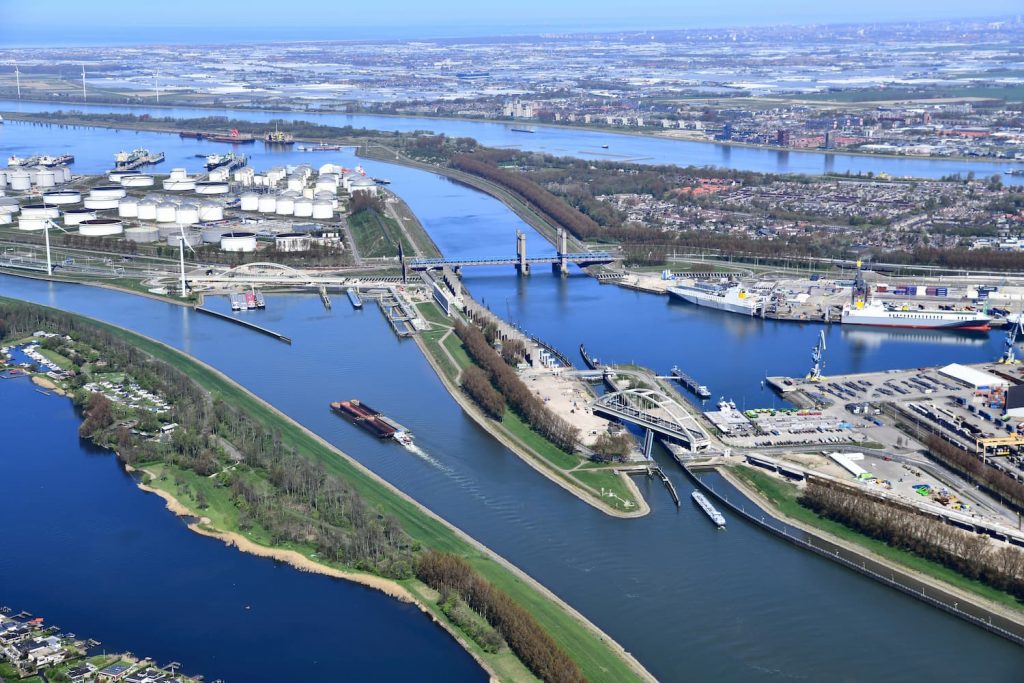
INTERVIEWER | Carola HEIN
What do you think are the main needs for the port, city and territory in light of climate change challenges, sustainable development and more circular practices? How does the Rotterdam Port Authority embrace its leadership role? What initiatives does the Port Authority take to overcome carbon-intensive practices? The Port of Rotterdam also leads digital innovation: what role does digitisation play in the development of the Port of Rotterdam and how can these new practices also benefit the port city territory?
INTERVIEWEE | Allard CASTELEIN, President and Chief Executive Officer, Port of Rotterdam
The targets for 2030 and 2050 are clear. We have to reduce CO2 emissions drastically as well as work towards a circular economy. We have taken the initiative to make a strategy to realise these ambitions, together with the business community, public authorities and NGOs. We call this the ‘in three steps sustainable’ strategy. Step 1 is to reduce the emissions of existing industry by applying efficiency measures, using residual heat and capturing and storing carbon dioxide in depleted gas fields under the North Sea. Step 2 is creating a new energy system based on renewable electricity and hydrogen. Step 3 is creating a new, circular fuels and raw materials system.
Our main role is to make it possible for private businesses to reduce their emissions, for instance by realising pipelines for hydrogen or to set up a carbon capture and storage project. Going from an oil and natural gas-based energy system to a system based on renewable electricity and hydrogen transcends the capacities of individual companies. The whole system has to change. Our role is to organise that for the port area, together with public and private parties.
And by doing so, we make sure Rotterdam remains a very competitive location for companies to do business, to invest in their facilities.
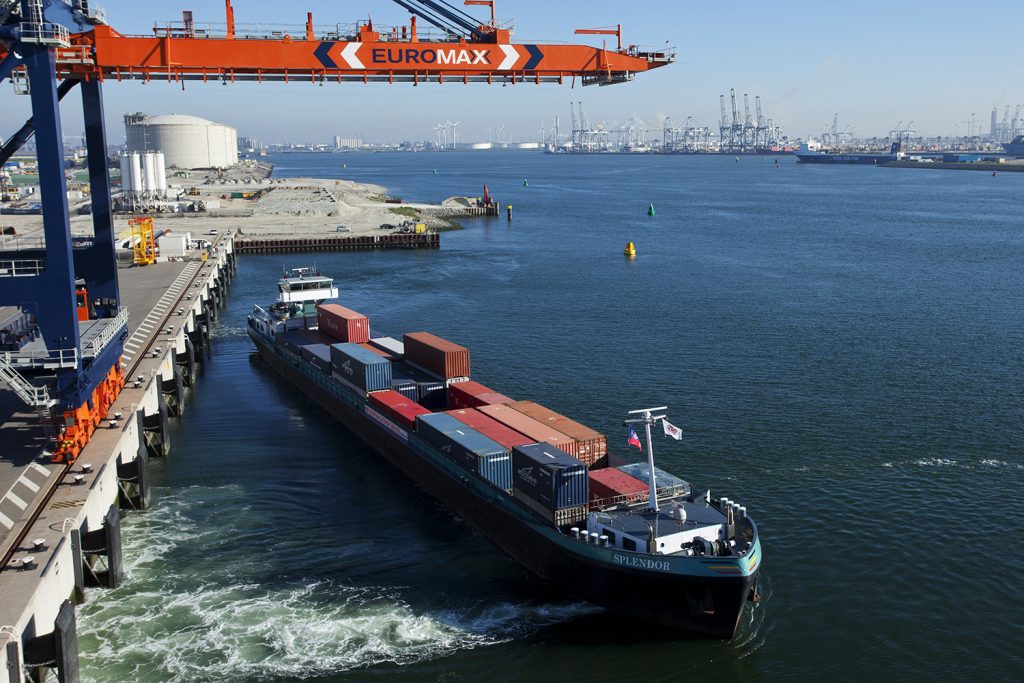
Digitisation is an important element to strengthen our competitive position. That’s why, together with our clients and partners, we’re investing in accelerating the digitisation of the port. Our goal is to minimise any kind of waste in terms of time, money, capacity and energy, so we can maximise the ease of doing business in Rotterdam.
Digitisation is fundamentally changing the world at an incredibly rapid pace, and the port is no exception. Behind the scenes of the visible traditional port featuring ships, containers and cranes, a digital version of the port is under construction. Considerable investments in wireless networks, a digital twin, an IoT platform, sensors and cybersecurity will enable the port to keep pace with the evolving environment, and the wishes and ambitions of the businesses in the port.
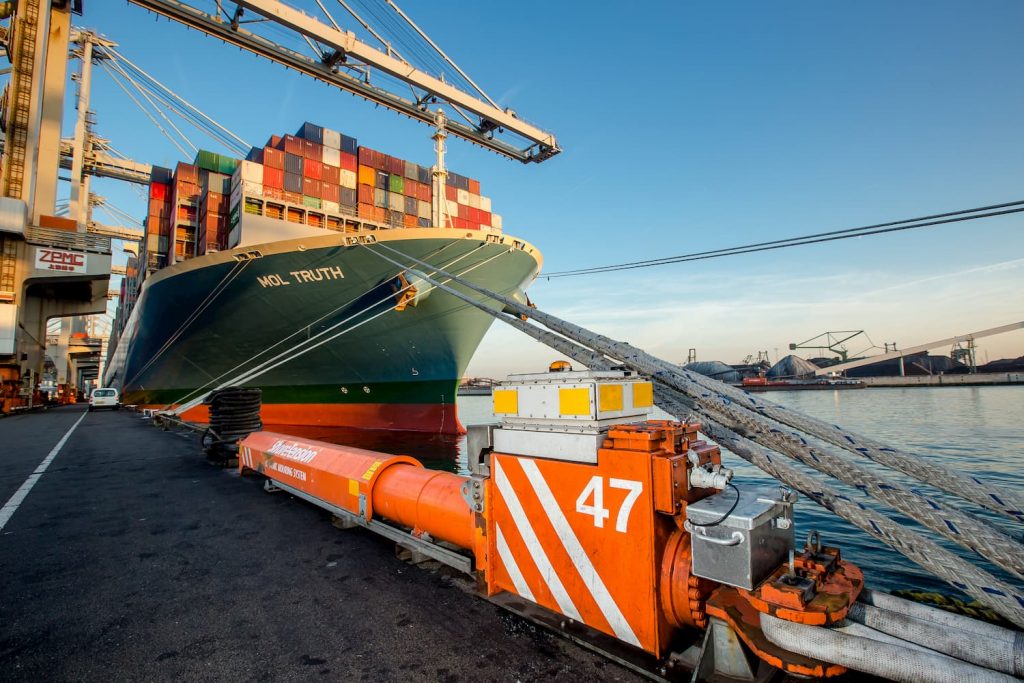
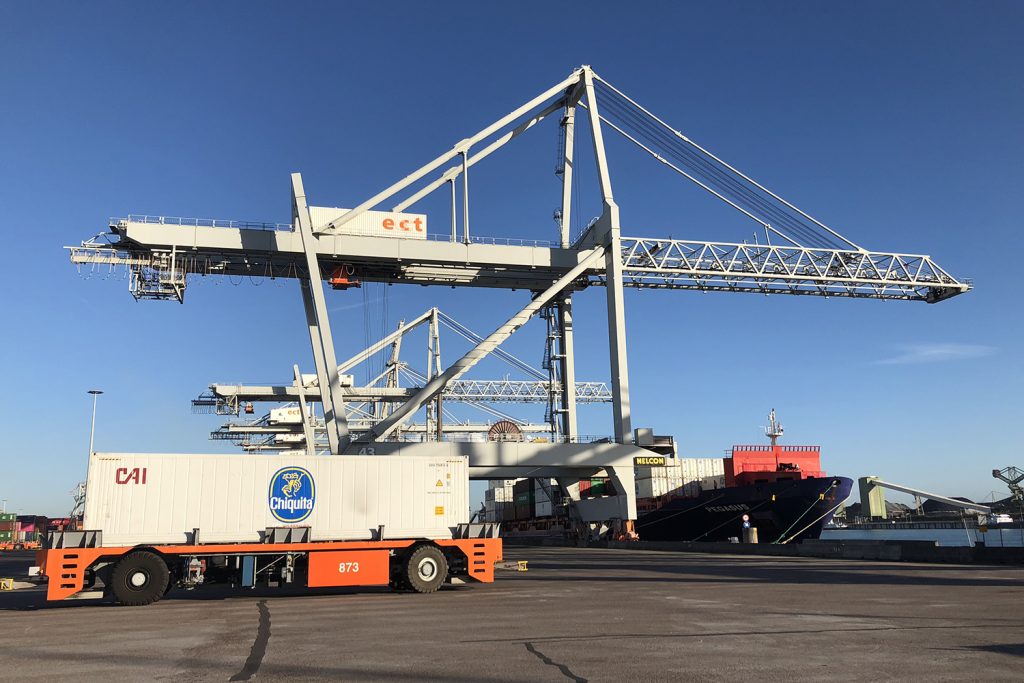
The main features of the digitisation initiatives revolve around three focal points.
By using sensors and data models we create smarter infrastructure, grounds and buildings. An example: we’ve installed the first smart bollard on our quay wall. By measuring the strain on the mooring lines in real time, the bollard not only allows the real-time monitoring of safety, but it also provides a clearer picture of which vessels can moor at which quays.
Our second focal point is about smart mobility. By using smart mobility solutions, we’re bolstering nautical safety and cybersecurity and optimising the shipping process and hinterland modes of transport.
And last but not least, we’re enhancing the chains running through Rotterdam with international and domestic cooperative ventures, and anticipating new technologies and platforms. Collaboration with Portbase is an important part of this. As the logistics data hub of the Netherlands, Portbase attracts major international players who want to do business in and via the Netherlands.
As a result of digitalisation, the nature of our work is also changing. We see new professions emerging, such as data scientists and developers. The prediction is that these jobs will only become more valuable in the future. The range of tasks in various (port) professions in 2021 cannot be compared to those of 20 years ago. It is therefore important that employees keep their skills up to date. And of course the ‘old’ professions also remain extremely important. A ship must continue to sail and a truck must be maintained. So new jobs are created. It is therefore important that we continue to motivate young people to opt for various courses and professions, both traditional and new ones.
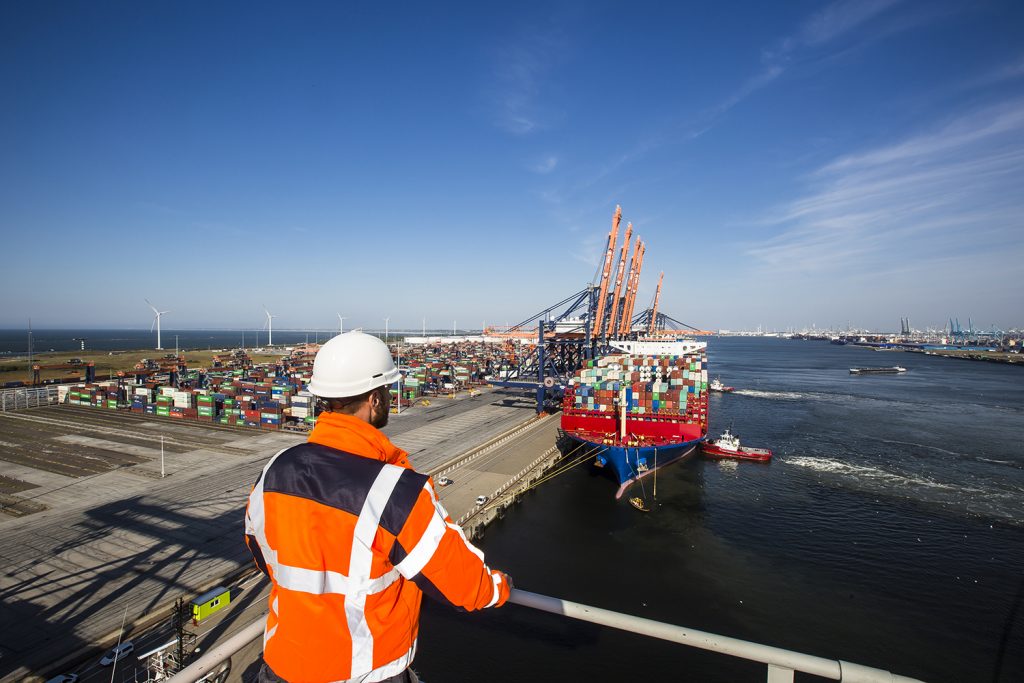
INTERVIEWER | Carola HEIN
Rotterdam has an intriguing history of waterfront redevelopment – most recently and ongoing, the RDM and M4H districts. What kinds of mechanisms does the Port of Rotterdam have to interact with the municipalities, provincial and national administrations to shape the port–city relationship? What kind of conflicts are most prominent, how do you expect them to evolve and how do you address them? What are the future waterfront redevelopment projects, such as Waalhaven, that we should know about?
INTERVIEWEE | Allard CASTELEIN, President and Chief Executive Officer, Port of Rotterdam
Redevelopment of former port areas like the ones you mention takes decades. We have made good agreements with the city of Rotterdam regarding the redevelopment of RDM, M4H and the east side of the Waalhaven area. I don’t expect other port areas to be redeveloped into urban areas in the foreseeable future.
INTERVIEWER | Carola HEIN
We would also like to know more about your vision of social and cultural aspects in port city development. Do you see a role for value-based future planning of port, city and territory? Does the traditional (historical) condition of the Port of Rotterdam as a municipal port have advantages in terms of the current and future port-city relationships?
INTERVIEWEE | Allard CASTELEIN, President and Chief Executive Officer, Port of Rotterdam
There has always been a very strong link between Rotterdam as a city and the port. Rotterdam has always identified itself as a port city, more than any other town in the Netherlands. The fact that the Port Authority now also has the state as a shareholder does not have much influence in this respect.
The land reclamation project Maasvlakte 2 has added to the sense of pride. People visit the western part of the port to look at the arrivals of the impressive containerships and we’re going to set up a new visitor centre in that area, because we notice people are interested in and fascinated by the port.
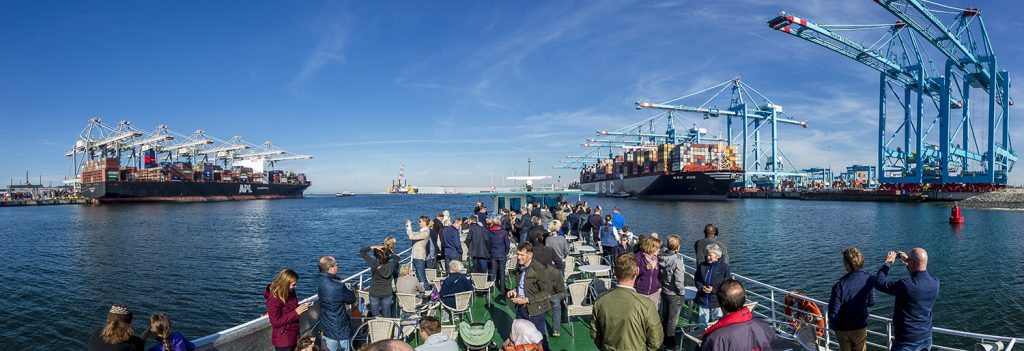
Head Image | Aerial photo Maasvlakte. (© Danny Cornelissen, 2020; Source: Port of Rotterdam Authority).